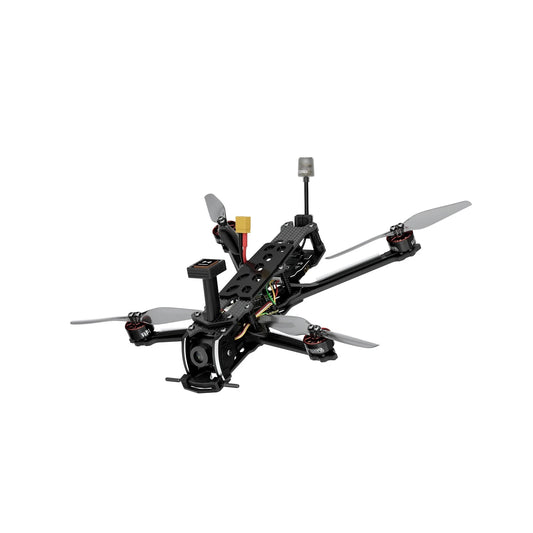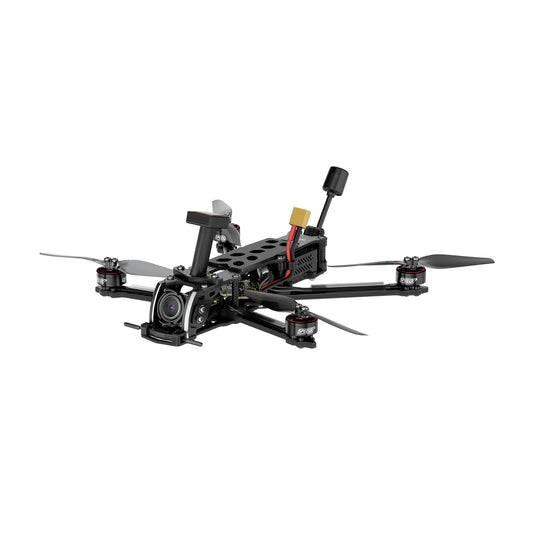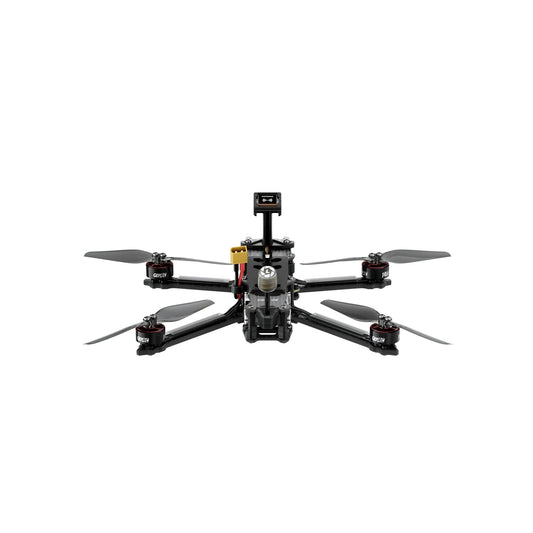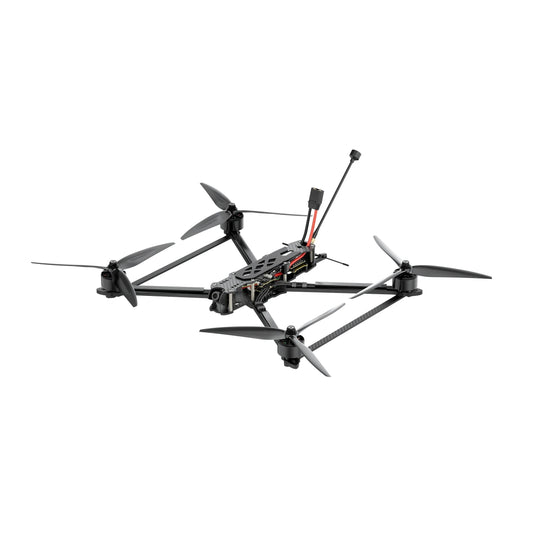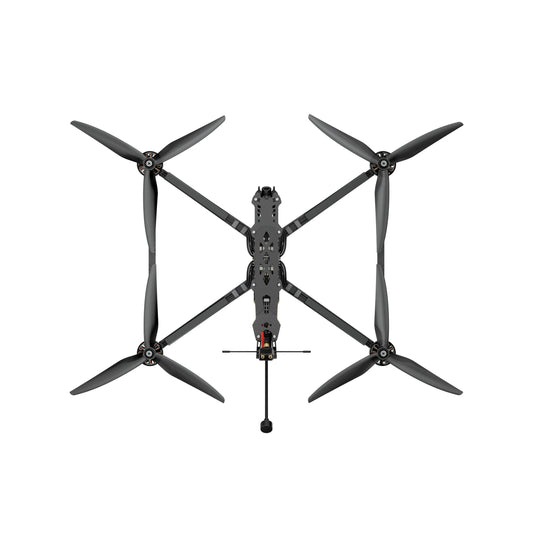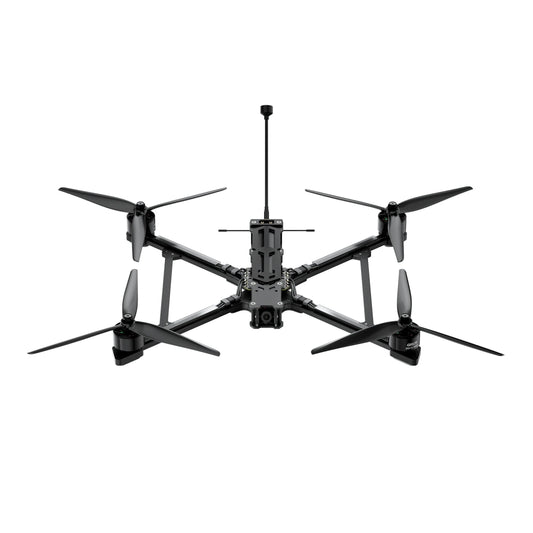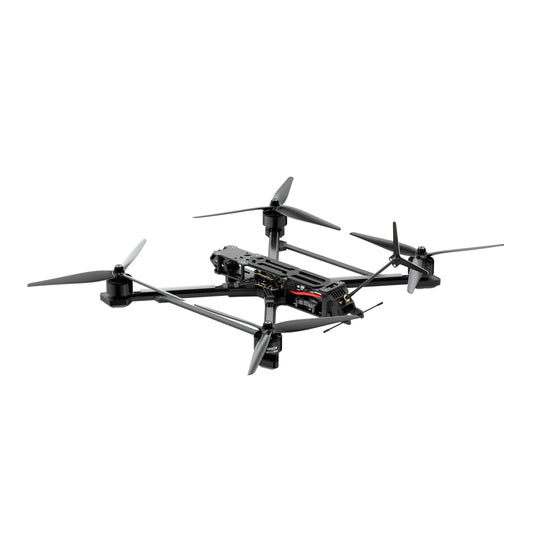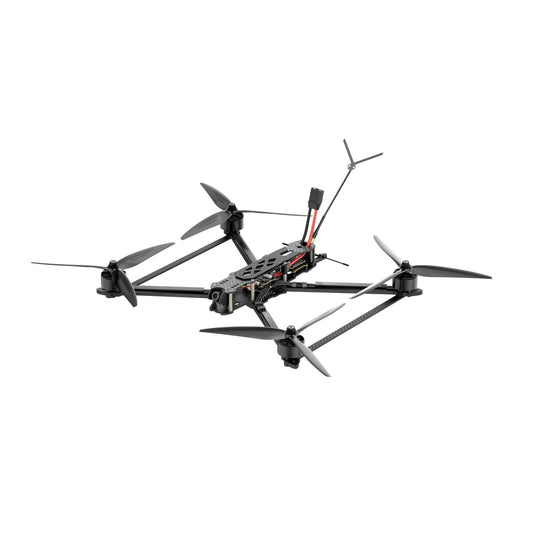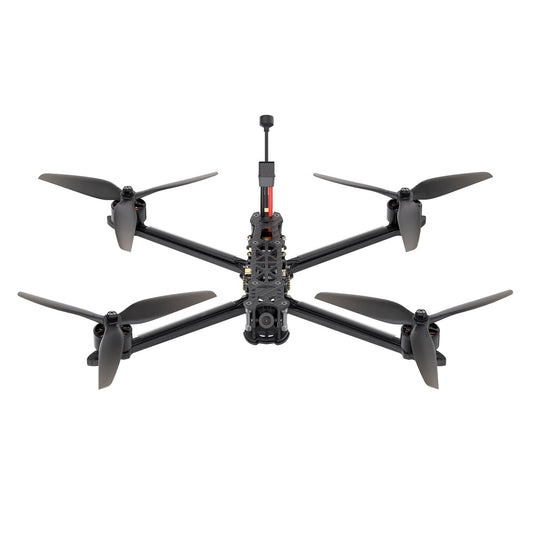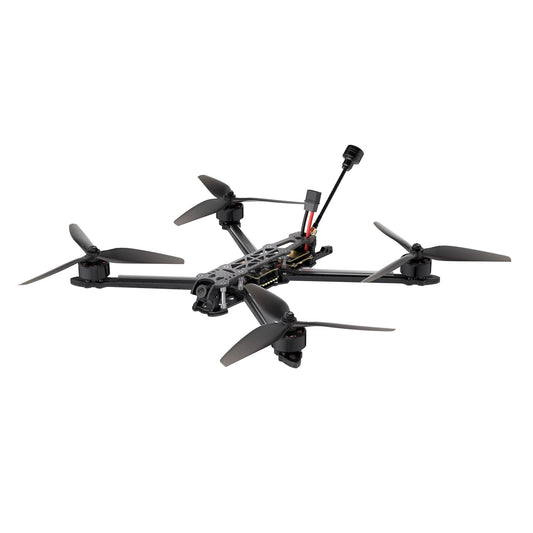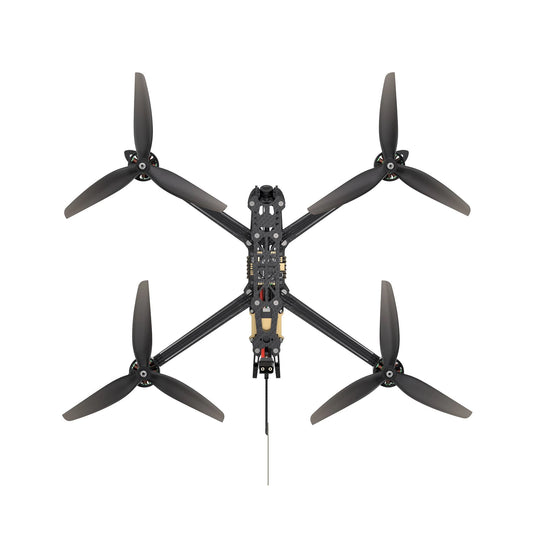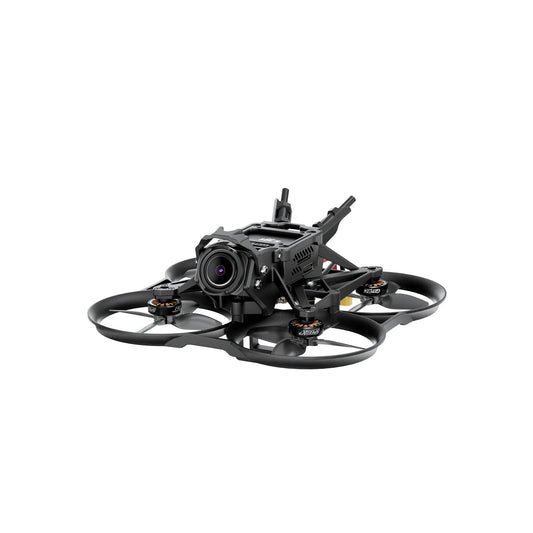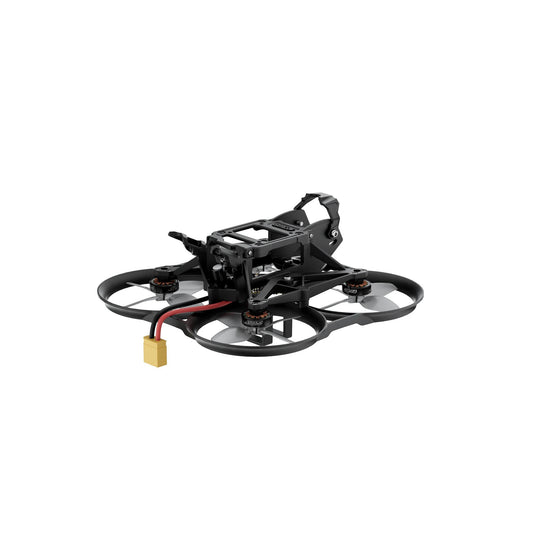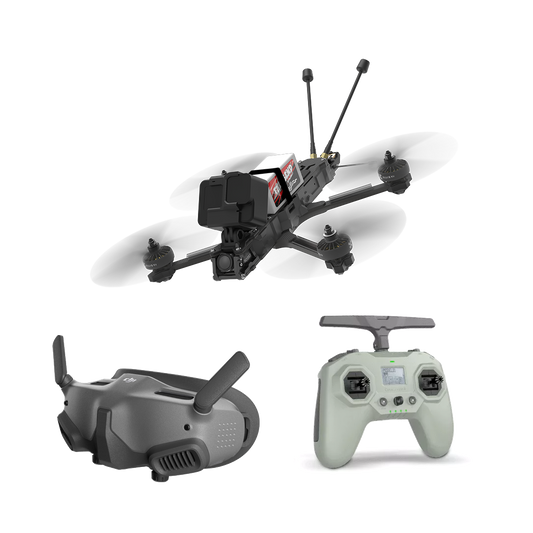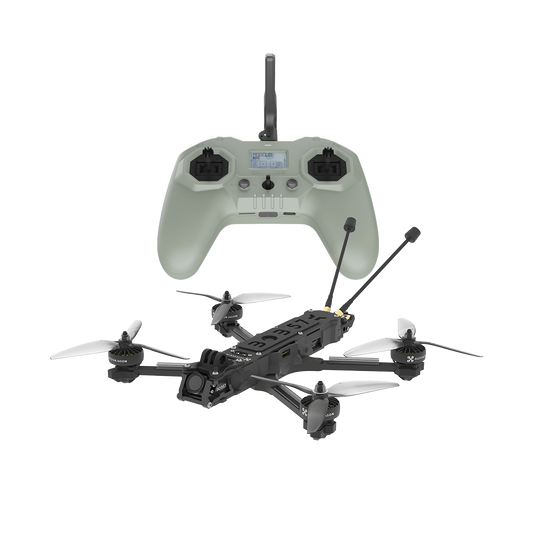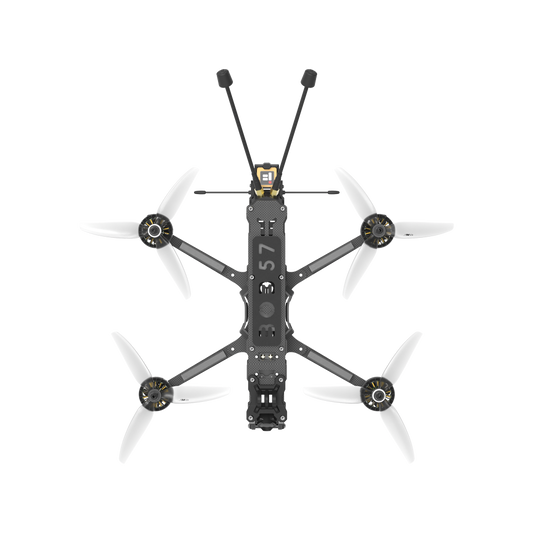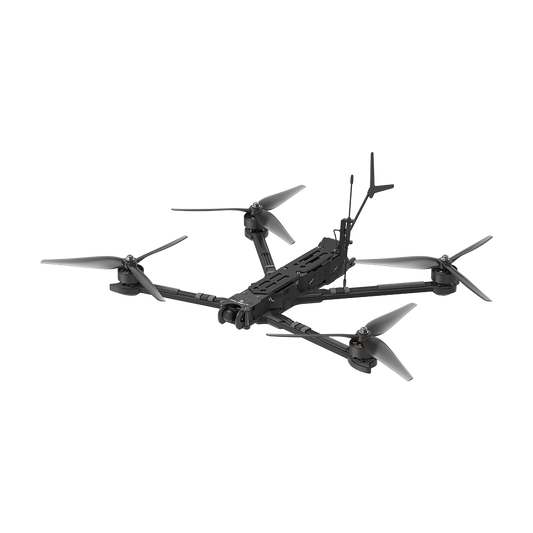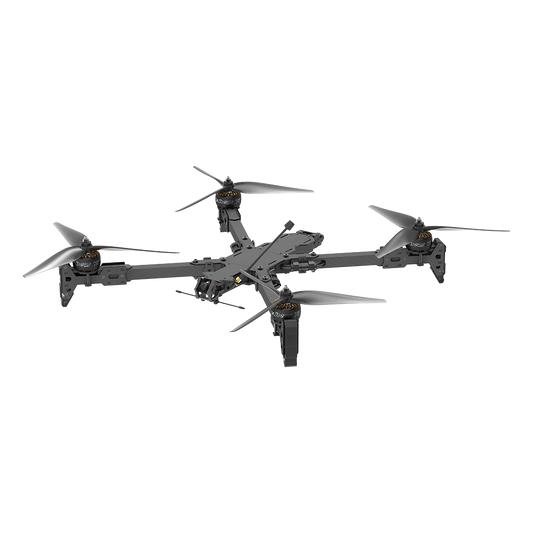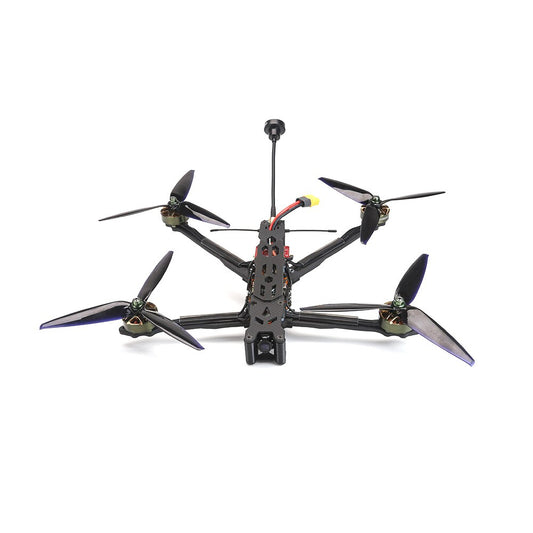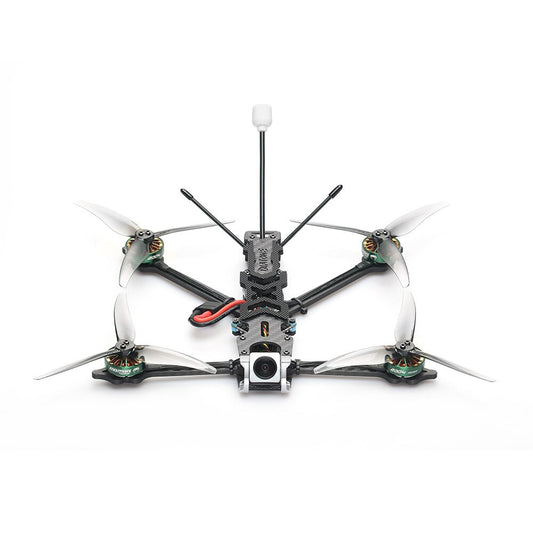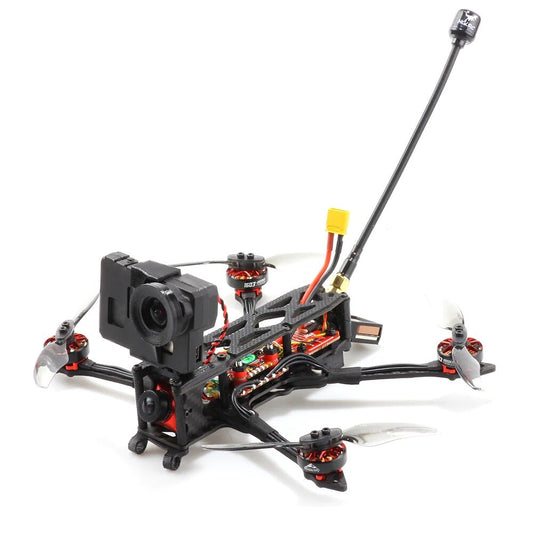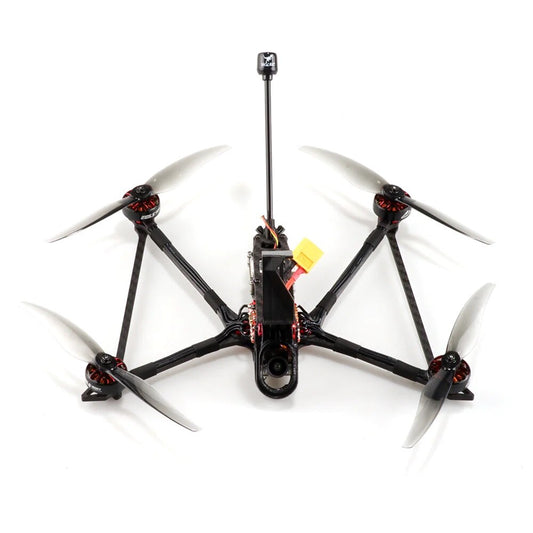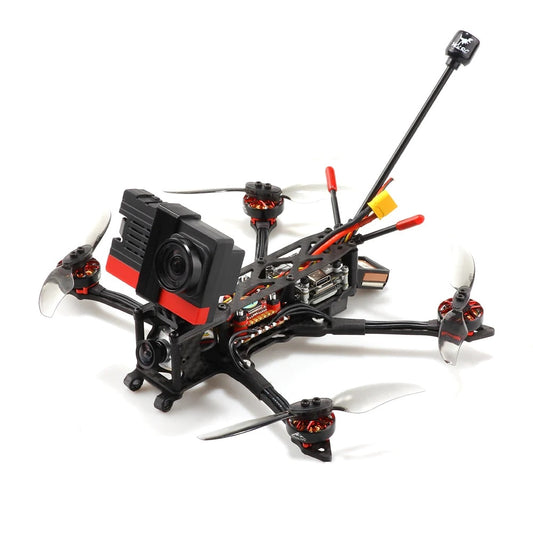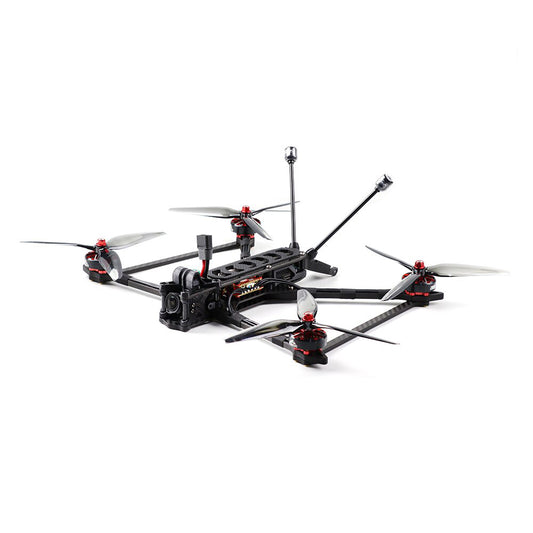-
iFlight Chimera7 ECO 6S Analog 7.5Inch FPV Long Range Drone with 1.2G 1.6W VTX/5.8G 1.6W VTX/5.8G 2.5W VTX
Regular price From $340.12 USDRegular priceUnit price per -
RCDrone SG 7L 7inch FPV Drone - 5.8GHz 1.6W 2kg Payload 7KM Long Range Super Power FPV Racing Drone PNP Quadcopter
Regular price $385.66 USDRegular priceUnit price per -
DS Lancer 7 MK1 7inch FPV Drone - 5.8G 2.5W 10KM Long Range 2.5KG Heavy Payload Cinelifter Freestyle Quadcopter
Regular price From $302.95 USDRegular priceUnit price per -
DarwinFPV X9 9 inch FPV Analog Drone - 3KM Distance 2.5KG Payload F11 FC 100A 4in1 ESC 2812 1100KV Motor 5.8Ghz 1W VTX 3-6S RC Long Range Quadcopter
Regular price From $413.77 USDRegular priceUnit price per -
RCDrone FLH10 10inch FPV Drone - 3.5KG Payload 7KM / 20KM Flying Range Long Range Quadcopter
Regular price $546.42 USDRegular priceUnit price per -
PUSHI Manta 13 X Lite 13 inch FPV BNF - 6KG Heavy Payload 10KM Long Range 6S F722 ESC Motor Link HD DJI O3 Camera RC Quadcopter
Regular price From $1,155.36 USDRegular priceUnit price per -
Axisflying Manta 13 X Lite 13inch FPV BNF - Long Range Heavy Payload Cinematic Drone
Regular price From $873.56 USDRegular priceUnit price per -
Axisflying Manta 13 X Lite - 13inch FPV / 10 inch FPV BNF Long Range Heavy Payload Customized DJI O3 VTX
Regular price From $981.39 USDRegular priceUnit price per -
Beyondsky 10inch FPV Drone - 5.8G 2.5W ELRS915 Long Range 2.5KG Payload Cinematic Drone
Regular price From $341.02 USDRegular priceUnit price per -
DS Lancer 10 MK1 10Inch FPV Drone - 5.8G 2.5W 10KM Long Range 3.5KG Heavy Payload Cinelifter Freestyle Quadcopter
Regular price From $362.48 USDRegular priceUnit price per -
Axisflying Manta 10 X Lite 10Inch FPV Drone - 2KG Payload Long Range With DJI O3/HD/Analog 5.8G 1.2G VTX
Regular price From $391.42 USDRegular priceUnit price per -
iFlight Helion 10 HD 6S 10Inch FPV Long Range Drone BNF with O3 Air Unit for FPV Parts
Regular price From $1,100.59 USDRegular priceUnit price per -
GEPRC Tern-LR40 Analog Long Range FPV - GPS 32Bit 45A SPEEDX2 1404 3000KV Quadcopter LongRange Freestyle RC Drone Rc Airplane 160g
Regular price From $246.62 USDRegular priceUnit price per -
GEPRC Tern-LR40 HD O3 Long Range FPV 4inch Taker G4 45A AIO GPS SPEEDX2 1404 RC Quadcopter LongRange Freestyle Drone Rc Airplane
Regular price From $488.03 USDRegular priceUnit price per -
GEPRC Tern-LR40 HD Wasp Long Range FPV - Betaflight OSD W/AT7456E Link Wasp HD Quadcopter LongRange Freestyle Drone Rc Airplane
Regular price From $374.22 USDRegular priceUnit price per -
GEPRC MARK4 LR10 10Inch FPV Drone - 5.8G 2.5W 2KM Long Range 3KG Payload High-performance RC Quadcopter
Regular price From $332.27 USDRegular priceUnit price per -
GEPRC MARK4 LR10 10inch FPV Drone - 5.8G 1.6W Long Range 3KG Payload EM3115 900KV GEP-BL60A-4IN1 ESC Freestyle Drone
Regular price From $347.36 USDRegular priceUnit price per -
GEPRC EF10 10inch FPV Droen - 5.8G 1.6W 2KM Long Range 4KG Heavy Payload EM3115 KV900 TAKER BLS 80A ESC Freestyle Drone
Regular price From $393.67 USDRegular priceUnit price per -
GEPRC EF10 10inch FPV Drone - 1.2G 2W 2KM Long Range 4KG Heavy Payload Freestyle Drone
Regular price From $405.25 USDRegular priceUnit price per -
GEPRC MARK4 LR10 10inch FPV - 1.2G 2W 2KM Long Range 3KG Payload Freestyle Drone With EM3115 900KV GEP-BL60A-4IN1 ESC High-performance RC Quadcopter
Regular price From $358.94 USDRegular priceUnit price per -
GEPRC MARK4 LR8 5.8G 2.5W FPV - EM2810 KV1280 8inch GEP-BLS60A-4IN1 ESC F405 RC Quadcopter LongRange Freestyle Drone Rc Airplane
Regular price From $307.12 USDRegular priceUnit price per -
GEPRC MARK4 LR8 4.9G 2.5W FPV - 8inch EM2810 KV1280 GEP-BLS60A-4IN1 ESC Quadcopter LongRange Freestyle RC Drone Rc Airplane
Regular price From $264.78 USDRegular priceUnit price per -
GEPRC MARK4 LR8 1.2G 1.6W FPV - EM2810 KV1280 8inch GEP-BLS60A-4IN1 ESC RC Quadcopter LongRange Freestyle Drone Rc Airplane
Regular price From $279.27 USDRegular priceUnit price per -
GEPRC DarkStar20 HD O3 Cinewhoop - SPEEDX2 1102 TAKER F411-12A-E 1-2S AIO RC Quadcopter LongRange Freestyle FPV Drone Rc Airplane
Regular price From $404.96 USDRegular priceUnit price per -
GEPRC DarkStar20 WTFPV FPV - Bluejay 8Bit 12A F411-12A-E 1-2S AIO RC Quadcopter LongRange Freestyle Drone Rc DIY Airplane
Regular price From $161.61 USDRegular priceUnit price per -
iFlight BOB57 O3 Cinematic 6S HD RTF - With Commando 8 ELRS and DJI Goggles 2 Long Range 6Inch FPV Drone
Regular price From $1,750.00 USDRegular priceUnit price per -
iFlight BOB57 O3 Cinematic 6S HD With Commando 8 - Long Range 6Inch FPV Drone BLITZ F722 FC BLITZ E55 55A 4-IN-1 ESC DJI O3 Air Unit BOB57 2506 motors
Regular price From $990.00 USDRegular priceUnit price per -
iFlight BOB57 O3 Cinematic 6S HD BNF 6 Inch Long Range FPV Drone - BLITZ F722 FC BLITZ E55 55A ESC XING2 2506 Motors 280mm Wheelbase TBS ELRS VTX/RX
Regular price From $839.00 USDRegular priceUnit price per -
iFlight Chimera9 ECO 6S BNF 9inch Long Range FPV Drone - Can Load 2.2KG, BLITZ ATF435 FC E55S ESC XING-E 2809 Motors 405mm Wheelbase 1.2G/5.8G VTX TBS/ELRS RX
Regular price From $399.00 USDRegular priceUnit price per -
iFlight X413 8S Analog BNF 13 inch Long Range FPV Drone - Can load 6KG, BLITZ F7 Pro FC E80 4-IN-1 Pro ESC XING 4214 motors 599mm Wheelbase
Regular price From $1,329.00 USDRegular priceUnit price per -
ATOMRC Insight7 - BLS 45A 6S 4IN1 ESC 2806.5 1350kv Motor BE220 GPS Long Range Light Weight Long Range 7 Inch FPV Racing Drone
Regular price $425.00 USDRegular priceUnit price per -
DIATONE Roma L5 - 4S/6S Freestyle Long Range PNP with Camera Mamba F4 and F7 AIO Toka Motor High Drone HQ Props without Receiver
Regular price $362.93 USDRegular priceUnit price per -
HGLRC Rekon 4 LR Micro 4Inch FPV - Long Range Quad Analog Version Caddx Ratel2 1603 2800KV WITH GPS For RC FPV Quadcopter Freestyle Drone
Regular price From $383.56 USDRegular priceUnit price per -
HGLRC Rekon 6 HD - Mini Long Range Quad Digital Version 4S Nebula Nano 2006 1500KV WITH GPS For RC FPV Quadcopter Freestyle Drone
Regular price From $655.37 USDRegular priceUnit price per -
HGLRC Rekon 4 LR - Micro 4 Inch FPV Long Range Quad Digital Version Caddx Polar 1603 2800KV 4S Motor For RC FPV Quadcopter Freestyle Drone
Regular price From $599.77 USDRegular priceUnit price per -
HGLRC Rekon 7 PRO - Long Range FPV Drone 6S - Digital Version CADDX AIR UNIT 2806.5 1250KV For RC FPV Quadcopter Freestyle Drone
Regular price From $849.39 USDRegular priceUnit price per












